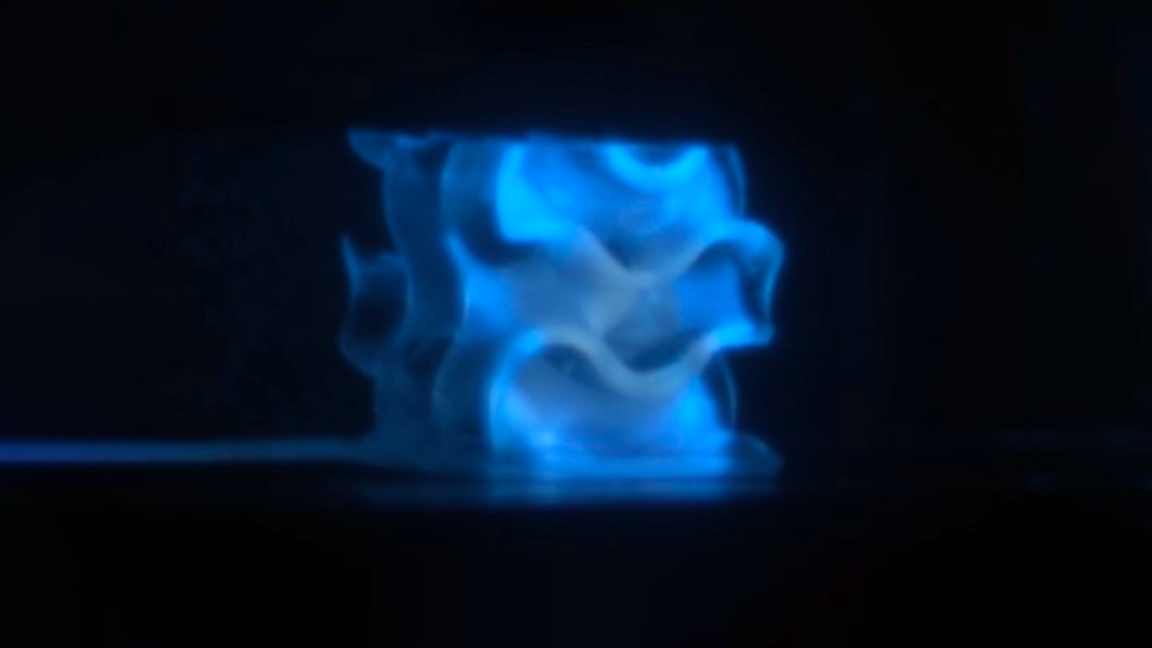 A team of researchers from INFN and the University of Ferrara has analysed the “Paolo e Francesca” painting by Gaetano Previati, among the most famous works of the artist, currently exhibited at Palazzo dei Diamanti in Ferrara. The analysis work, presented at the International Exhibition of Restoration, was performed with the technique of digital radiography with a scanner for in situ radiographic diagnostics, built and designed thanks to the collaboration between the Department of Physics and Earth Sciences of the University of Ferrara and the INFN Ferrara section. The hidden story of the painting emerges from the more than 1,000 digital x-rays taken. Thanks to these analyzes it was, in fact, possible to bring to light the first draft of the work, which reveals details hidden in the painting, such as the different position of the face of Francesca, initially painted by Previati with the head reclined backwards. The change is very evident because the first draft of the face of the young girl, subsequently abandoned and covered, is perfectly recognisable thanks to the radiopacity of the pigments used that are still under the painting’s surface. The analyses were conducted as part of the activities of the cultural heritage network INFN-CHNet (Cultural Heritage Network). The scientific diagnostic program was carried out in collaboration with the National Institute of Optics of the CNR, which performed imaging diagnostics in infrared and ultraviolet fluorescence. The interpretation of the scientific diagnostics, which have already been used in the restoration of the work, represents an important element for a historical-artistic investigation of early twentieth century art.
A team of researchers from INFN and the University of Ferrara has analysed the “Paolo e Francesca” painting by Gaetano Previati, among the most famous works of the artist, currently exhibited at Palazzo dei Diamanti in Ferrara. The analysis work, presented at the International Exhibition of Restoration, was performed with the technique of digital radiography with a scanner for in situ radiographic diagnostics, built and designed thanks to the collaboration between the Department of Physics and Earth Sciences of the University of Ferrara and the INFN Ferrara section. The hidden story of the painting emerges from the more than 1,000 digital x-rays taken. Thanks to these analyzes it was, in fact, possible to bring to light the first draft of the work, which reveals details hidden in the painting, such as the different position of the face of Francesca, initially painted by Previati with the head reclined backwards. The change is very evident because the first draft of the face of the young girl, subsequently abandoned and covered, is perfectly recognisable thanks to the radiopacity of the pigments used that are still under the painting’s surface. The analyses were conducted as part of the activities of the cultural heritage network INFN-CHNet (Cultural Heritage Network). The scientific diagnostic program was carried out in collaboration with the National Institute of Optics of the CNR, which performed imaging diagnostics in infrared and ultraviolet fluorescence. The interpretation of the scientific diagnostics, which have already been used in the restoration of the work, represents an important element for a historical-artistic investigation of early twentieth century art.
You might also be interested in

EuPRAXIA chooses ELI Beamlines as second site for laser-driven accelerator

The record neutrino observed by KM3NeT
07 February 2025
Read more The record neutrino observed by KM3NeT

INFN celebrates the STEM WEEK and the International Day of Women and Girl in Science 2025

International Year of Quantum Science and Technology, 2025
03 February 2025
Read more International Year of Quantum Science and Technology, 2025

A new generation of plastic scintillators thanks to 3d printing

Capturing the accretion flow of M87* black hole
22 January 2025
Read more Capturing the accretion flow of M87* black hole